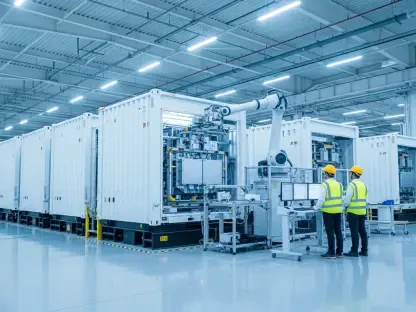Imagine a sweltering summer afternoon; the demand for electricity soars as air conditioners rumble to keep homes cool. The lights flicker as the grid creaks under the pressure. Surprisingly, these scenes of strain may soon become less common, thanks to the humble solar panel on your neighbor’s roof and the battery in your garage. A remarkable transformation is underway in our approach to energy—one that may hold the answer to our modern challenges.
A New Day in Energy
In recent years, North America’s electricity demand has surged due to factors like burgeoning data centers, expanding domestic manufacturing, and the growing wave of electrification. These trends have stressed traditional energy infrastructures, often resulting in increased risks of blackouts during peak demand. Astonishingly, industry reports reveal that this demand could grow by 20% over the next five years, pushing existing systems to their limits. This burgeoning demand presents a significant challenge that requires innovative solutions to maintain grid stability.
Surging Demand: A Power Challenge
The rapid increase in electricity demand is driven by technological advancements and expansions in multiple sectors. Traditional energy frameworks struggle under this weight, often faltering during critical moments. Infrastructure development has not kept pace with this growth, leaving a gap in reliable energy supply. These challenges manifest in real-world implications, such as prolonged power outages and increased reliance on fossil fuels during emergency highs. It’s a precarious balance that demands new approaches to energy distribution and consumption.
Empowering the Grid with Residential DERs
Distributed Energy Resources (DERs), such as rooftop solar panels and home batteries, are redefining energy resilience. By integrating these resources into a distributed energy network, households are no longer mere consumers but active participants in energy production and stability. A pertinent example of this is Virtual Power Plants (VPPs), where clusters of homes equipped with DERs collectively manage energy supply and demand. This not only provides up to 60 GW of capacity without extensive infrastructure but also supports decarbonization goals. A recent success story involved a VPP entirely mitigating a regional power spike, showcasing the potent impact of these resources.
Insights from Industry Leaders
Energy sector experts are vocal about the transformative effect of DERs on modern grids. An eminent energy analyst recently noted, “Residential DERs are pivotal in navigating the complexities of today’s energy market while promoting sustainability.” One enthusiastic early adopter shared that integrating solar panels and batteries into their home dramatically cut energy costs and increased their independence from the grid. Research strongly supports these claims, highlighting DERs as both cost-effective and sustainable, with potential savings of $15–35 billion over the coming decade.
Strategies for Transition: Utility and Consumer Collaboration
Utilities and consumers are at a crossroads in shaping future energy landscapes. For utilities, strategies such as developing proactive customer engagement programs are vital in fostering trust and encouraging DER adoption. They can advance this transition by collaborating with technology partners, such as Franklin Energy, specializing in comprehensive load management programs for residential settings. On the consumer side, steps toward embracing DER technology, such as installing solar panels or smart home devices, can significantly contribute to this paradigm shift. Both parties must work in harmony, creating an integrated framework that supports clean, reliable energy for all.
Charting the Path Forward
As the energy sector progresses toward more distributed power systems, stakeholders must focus on strategic coordination and robust technological integration. This collaboration has proven essential in meeting increased energy demands efficiently and sustainably. Embracing the promise of residential DERs marked a crucial turning point, allowing utilities and consumers to rethink how energy is produced and consumed. In looking ahead, these efforts reflect a commitment to advancing our energy infrastructure in innovative, forward-thinking ways that benefit both the environment and society.









